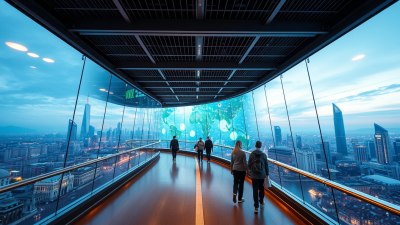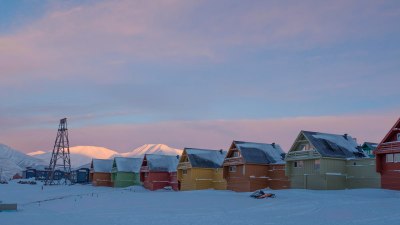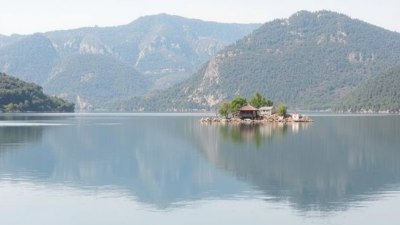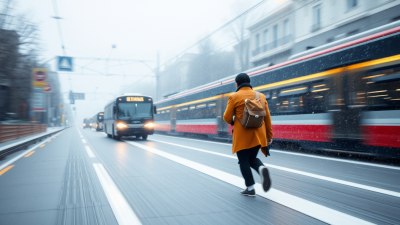Unlocking New Worlds One City at a Time
Explore urban transformations and discover how cities are evolving into vibrant cultural hubs.

Unlocking new worlds within cities has become a significant theme in urban development, architecture, and community engagement. Cityscapes around the globe are undergoing spectacular transformations, bridging the divide between historical landscapes and modern innovation. All around the world, cities are no longer just centers of commerce and governance; they have evolved into vibrant cultural hubs where art, technology, and community intersect, creating dynamic spaces that invite exploration and engagement.
As cities continue to grow and adapt, a key trend emerges: the integration of technology into urban planning. Smart cities utilize data analytics, IoT devices, and user-centered design principles to improve the quality of life for their inhabitants. For instance, Barcelona has implemented smart street lighting, waste management systems, and weather monitoring technologies to create a seamless living experience for its citizens. These innovations not only enhance efficiency but also foster community participation by empowering residents to contribute to decision-making processes.
Cultural Revitalization
Urban areas also serve as beacons for cultural revitalization. Cities like Berlin, New Orleans, and Tokyo encapsulate rich histories while simultaneously pushing the boundaries of contemporary expression. In Berlin, artists and entrepreneurs have transformed former industrial zones into exciting spaces filled with galleries, performance venues, and unique restaurants. This resurgence not only provides new economic opportunities but also enhances cultural exchange, illustrating how cities can unlock creativity through inclusive redevelopment.
New Orleans stands as a notable example of how history and culture can breathe life into urban landscapes. The city's unique blend of French, African, and Spanish influences is reflected in its architecture, music, and cuisine, creating an unparalleled atmosphere that draws millions of visitors each year. Furthermore, as efforts toward sustainability increase, cities are reimagining public spaces into urban parks and community gardens, allowing residents to reconnect with nature amidst the concrete.
Rethinking Urban Mobility
In conjunction with cultural integration, urban mobility is undergoing a significant rethink. Cities are now focusing on public transport systems that prioritize connectivity over speed. Initiatives that promote cycling, walking, and the use of public transit help reduce carbon footprints and enhance social interactions within urban environments. The rise of bike-sharing programs and electric scooters in cities such as Amsterdam and San Francisco epitomizes this shift, as they allow residents to navigate urban landscapes with greater ease and less environmental impact.
Moreover, innovative solutions like autonomous vehicles and integrated transport networks are being explored to further mitigate traffic congestion and improve transit efficiency. Transport for London, for instance, has made strides in creating an interconnected network that simplifies commuting across the city. Such advances pave the way for cities to not only unlock the potential of their infrastructure but also improve the overall experience of urban living for residents and visitors alike.
The Role of Community Engagement
Community engagement plays a crucial role in the successful transformation of urban spaces. Cities that actively seek input from local residents tend to create more inclusive and vibrant environments. Ground-up initiatives, such as participatory budgeting and community-led urban design, empower citizens to take ownership of their neighborhoods, leading to truly democratic urban development. Cities like Porto Alegre in Brazil have exemplified how citizen input can significantly influence budget allocations to enhance public services and infrastructure.
Moreover, community-led projects have become instrumental in preserving cultural heritage while allowing for modern updates. For example, in many Latin American cities, artistic murals tell the story of local history and identity, serving as canvases that resonate with residents and inspire pride within communities. By blending the old with the new, cities can unlock a sense of belonging and identity among their residents.
Sustainable Urban Design
As urban centers are unlocking new worlds, the urgency of sustainability possesses a significant weight in discussions on future city planning. The UN has set ambitious targets for urban sustainability, urging cities to adopt strategies for reducing waste, enhancing energy efficiency, and creating resilient ecosystems. Cities like Copenhagen are leading the way through comprehensive initiatives focused on sustainable urban design practices.
Copenhagen's extensive biking infrastructure and commitment to becoming carbon neutral by 2025 underline the importance of prioritizing environmental considerations in urban planning. Incorporating green roofs, urban forests, and renewable energy installations allows the city to mitigate the effects of climate change while improving residents' quality of life.
Education as a Catalyst for Change
Education is emerging as a critical factor in unlocking new worlds within urban landscapes. Academic institutions are increasingly collaborating with city governments and local organizations to drive innovation in urban policy and design. Universities in cities such as Los Angeles and Toronto have embraced partnerships that focus on research and development projects, aiming to solve pressing urban challenges like housing affordability and transportation inefficiencies.
Moreover, educational initiatives that promote environmental awareness and skills development empower citizens to actively participate in shaping their cities. Workshops focused on sustainability practices, public arts programs, and economic development create pathways for community members to become active contributors to urban life. For instance, gardening programs in schools have brought together students, families, and local businesses, fostering collaboration and instilling a sense of stewardship over their neighborhoods.
The Future of Cities
As we look ahead to the future of urban development, it is essential to recognize the interconnectedness of social, economic, and environmental factors in shaping cities. By prioritizing community engagement, sustainability, and technological integration, cities can continue to unlock new worlds, nurturing not only their residents but also the myriad of cultures that contribute to their vibrancy.
Investments in adaptive reuse and mixed-use developments can breathe new life into forgotten spaces, transforming them into thriving communal hubs. Furthermore, with continued advancements in technology, cities can harness the power of data to construct more efficient systems that meet the evolving needs of their populations. Every decision and action taken in urban planning today will resonate through the fabric of future urban landscapes, creating opportunities for cultural enrichment, environmental sustainability, and economic resilience.
In conclusion, the journey of unlocking new worlds one city at a time is a complex, multifaceted endeavor that requires collaboration and forward-thinking leadership. As cities across the globe continue to evolve and embrace the challenges of modernity, they have the potential to become beacons of inspiration, inviting exploration and engagement from all who enter. The cities of tomorrow are being cultivated today, transforming how we view ourselves within urban landscapes and how we envision our collective future. Each city, in its unique way, provides a glimpse into the possibilities that lie ahead, unlocking an array of experiences that await future generations of explorers and citizens.











